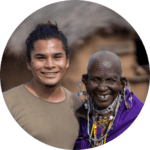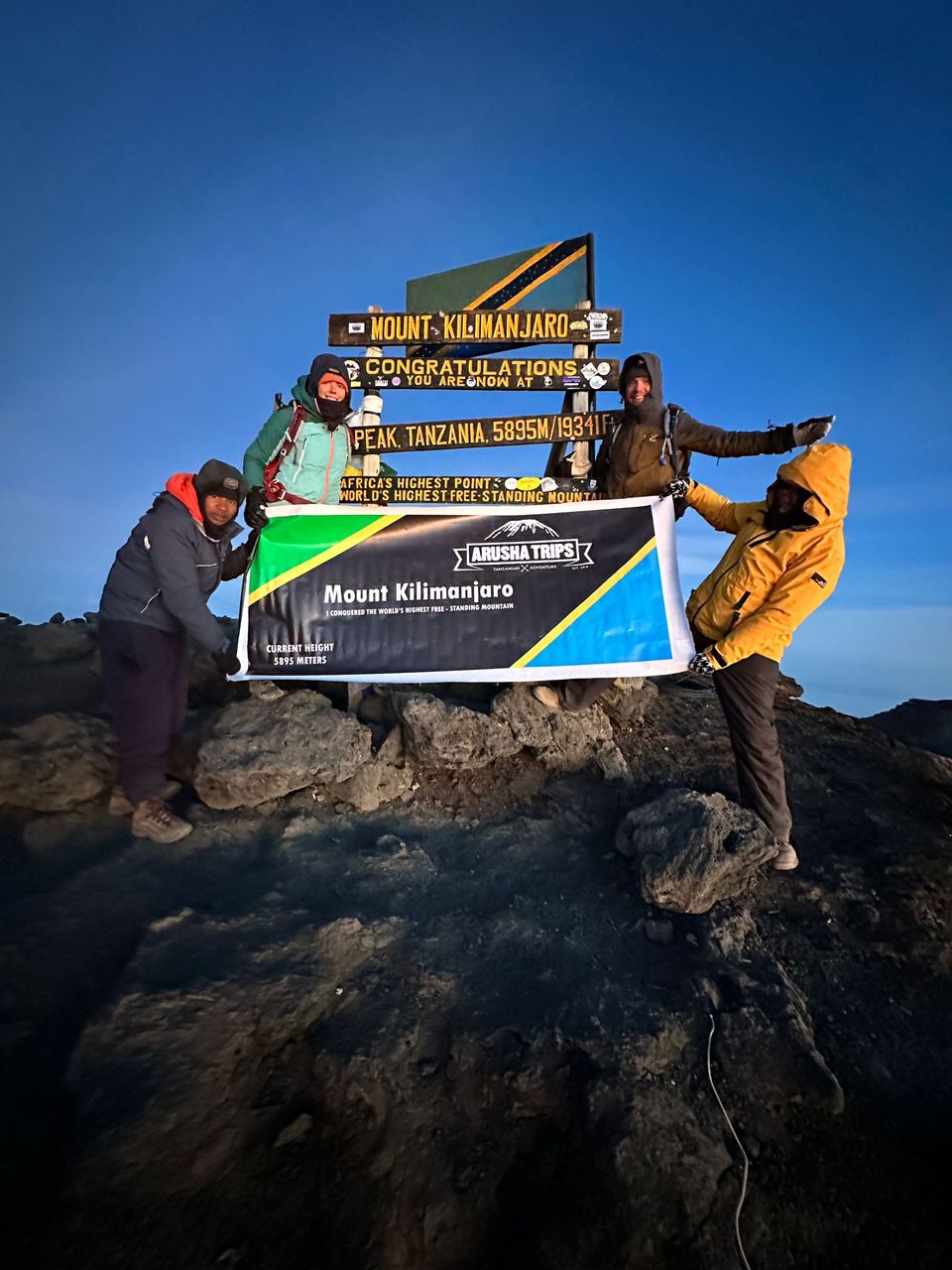The Kilimanjaro Machame route, also known as the “Whiskey Route” is the most popular and ‘easiest’ way to climb Kilimanjaro and can be done in 6 or 7 days. The route’s steady altitude gain makes acclimatisation it a bit easier compared to some of the other routes. The route offers a nice blend between challenge, stunning views, and time for acclimatisation.
Over the course of these 6 or 7 days, we’ll be spending our nights at the established campsites and reach the summit of Kilimanjaro on day 5 or 6, right at sunrise!

Seasons:
Your Team: Per group you climb with a professional team, generally consisting of 1 or 2 English speaking guides, 1 cook and 3 porters per person. The exact number sometimes varies and depends on specific requirements of our guests.
Our guides will lead you to the summit and provide you with all the necessary information, tips & tricks & lift your spirits when in dire need, to maximise your chances of a successful climb. All of the guides know the mountain like the back of their hands, are specially trained and have years of climbing experience.
The porters will carry all your belongings, tents & food, so you can climb at ease with only your daypack. The cook will prepare 3 solid meals a day, so you can take on the mountain like a champion. Drinking water will be provided as well, which will be refilled with a water filter at various points on the mountain.
This trek includes
Not included
*International flights can be arranged via us if preferred.
Safety: Safety on the mountain is our first priority. Even though it doesn’t take a professional climber to summit Kilimanjaro, it’s still a tall mountain and the high altitude comes with risks.
Prior to each climb, our guests receive a comprehensive briefing that covers the route, safety procedures on the mountain and discuss potential health issues of each individual guest, to ensure that everyone can ascend the mountain fully prepared and in a safe manner.
Our guides receive annual training on the effects of altitude, providing medical assistance and administering oxygen. The team is equipped with a professional medical kit in case of Emergency. They are responsible for your safety and have the authority of discontinuing the trek if they think the conditions are unsafe. At high altitudes, your blood pressure is measured daily to monitor your health.
Acclimatisation: Climbing is done according to the ‘climb high, sleep low’ principle. This principle states that one should climb to a relatively higher elevation than the altitude of where one sleeps. This gives your body the chance to get used to the high altitudes when climbing high, and grants the opportunity to recover and rest at the lower elevations. Doing so, decreases your chance of altitude sickness and increases your chance of reaching the summit.
Fair treatment of our personnel: We are committed to the fair and ethical treatment of all porters and guides. We strictly adhere all rules set by KINAPA (Kilimanjaro National Park); ensuring that each porter has the proper gear to ascent the mountain, and that all carrying bags supplied by us are weighed, to ensure that they do not exceed the maximum of 20 kg.
Furthermore, we promote fair wages, accommodation, insurance & food for cooks, guides & porters as set by the KPO (Kilimanjaro porters association). This way, you can climb the mountain feeling confident about yourself ánd your team.
Leave only footprints: On all our climbs, we strive to reduce our environmental impact to a bare minimum. We make sure that any waste that has gone up the mountain, comes back down as well. By doing this, everybody can enjoy this magnificent mountain for many years to come.
*We also recommend that you bring your own water bottle to reduce plastic waste.

On the first day of the Kilimanjaro Machame route, we’ll drive from Moshi to the gates of Mount Kilimanjaro National Park. On the way, we’ll pass the village of Machame, which lies below the mountain. After reaching the gate, we’ll begin our final preparations.
Starting from the gate, our hike takes us through the forest at the foot of Kilimanjaro, all the way to the first camp. Here, we rest, have dinner together, and overnight.
After your first breakfast on the mountain, we’ll proceed with the climb. The path starts off steeper than the day before. We will pass through the rainforest and past a steep rocky ridge. If you’re lucky, you might catch some views of Kibo, the top of Kilimanjaro.
The route takes us further until we reach the Shira Plateau. Once we’ve arrived, you’ll be able to see the Western Breach with its stunning glaciers. A short while after this, we will reach the Shira Campsite where we’ll have dinner and stay overnight. Make sure you have warm clothes with you, as it gets much colder from here on.


From the Shira Plateau, we’ll trek through a desert-like rocky landscape towards the Lava Tower, also known as the ‘Shark’s Tooth.’ This is often the most challenging day due to the fast altitude gain, which can cause breathlessness and headaches. Remember to take it slow, one step at a time.
Once we reach Lava Tower, we descend again, toward Barranco Camp, offering beautiful views of the Western Breach and Breach Wall along the way—a great photo opportunity.
After about two hours, we arrive at the camp, nestled in a valley below the Breach and Great Barranco Wall. Here, we have dinner and acclimatize using the ‘climb high, sleep low’ principle, preparing our bodies for a successful summit day.
Even though this day is ‘optional’, it is still strongly recommended. We climb according to the ‘climb high, sleep low’ principle, which gives your body the chance to get used to the high altitudes. This increases your chance of reaching the summit and is highly recommended for inexperienced climbers.
Today we will depart from Barranco Camp and continue along a steep ridge, passing the Barranco Wall, and further through the Karanga Valley. Here, you will have the chance to see the glaciers up close. Afterward, we will have lunch and stop at the Karanga Valley campsite, where you can enjoy views of the Mawenzi Slopes and the Tanzania Sugar Plantation farms. Before returning to the campsite for dinner, you can take a brief walk in the surrounding area.


In the early morning, we will leave the Karanga Valley campsite, heading towards the junction that will take us to the Mweka Trail. From here, we’ll continue to the Barafu Camp at 4670m high, which offers views of the summit. At this point, we have completed the Southern Circuit. This is a great moment to grab your camera, as the two peaks of Mawenzi and Kibo are visible from this site. Here, we will set up camp with our eyes on the prize.
The summit is now a further 1225m up, and you will make your final ascent the same night. Prepare for the next night, as it will be a short one… SUMMIT NIGHT.

In the early, early morning. Still shivering from our short and cold night, we will enjoy warm coffee or tea together to lift our spirits. Now we will hike in the dark, with flashlights towards the summit of Uhuru peak at 5895meters high. Our last ascent of the Machame Route. Once at the top, we will enjoy one of the world’s most incredible sunrises. Such moments make the climb well worthwhile. You’ve made it! Uhuru Peak is the highest point of Kilimanjaro ánd the whole of Africa. A place never to forget.
Make sure to bring two sets of clothing. The night will be bitterly cold, but after the sun rises over the peak of Kilimanjaro, the temperature will quickly rise.
After the summit, we will make our descent straight down to the Mweka Hut Campsite, stopping at Barafu Camp for lunch. Mweka Camp is situated in the upper forest.


Hopefully well rested and not too sore from the long hike the other day, we will have breakfast. We continue the descent down to the Mweka Park Gate to receive your Kilimanjaro-Northern Circuit’ summit certificate. At lower elevations, it can be wet and muddy.
The car will be waiting for you at the Mweka Gate to take you back to the hotel in Moshi for a hot shower.
On the Kilimanjaro Machame Route we camp at the established campsites mentioned in our day-to-day. On this route we camp in tents. We spend the night in four-season mountain tents, made of thick high-quality canvas, capable of withstanding all weather conditions on Kilimanjaro.
The tents are carried by our porters, who will walk ahead of you to set up the camp. Once you have reached the campsite, you can relax without having to worry about setting up your tent.

Well, if you’re reading this, you’re probably curious about the best time of the year to climb Kilimanjaro. Then perhaps, I can make you happy, because you can climb Kilimanjaro all year round! There are just a few periods that we recommend or discourage more. Let’s start with the period we do not recommend, as it falls in the rainy season. Here you have the chance of the climb being blown off, on the other hand, nature is breathtaking green. This is the time period between March and May.
The other months are actually all recommendable. For instance, the most popular period is from December to February because these are Tanzania’s summer months. The temperature at the summit is most pleasant! In the month of November, you face small alternating rain showers, on the contrary, the temperature is very nice and you hike through beautiful green surroundings. The mountain is also great to climb in the months of June to October. This period, although it’s quite cold, it is outside the rainy season. So now you see, everything has its pros and cons.
Are you excited about climbing Kilimanjaro? A 6-year-old boy climbed the mountain once and came back in one piece too, so I think you can do it also! Of course, you shouldn’t compare yourself to that, but the fact is that the mountain is accessible to everyone. Every year, thousands of people successfully reach the summit.
You definitely need to have a healthy fitness level and bear in mind that the conditions on the mountain have a big impact on your body. The high altitude, rugged terrain and temperature changes, quickly exhaust you. These conditions also require you to cover a good number of kilometers over several days. If you can walk 20 km with a heavy backpack without getting sore muscles, you are probably in the right shape.
Are you a little unsure about your physical fitness? Then we have some tips you can use before conquering Kilimanjaro.
Temperatures on the mountain can be very different and vary by altitude zone (5 in total). Also, it depends on what time of year you are climbing Kilimanjaro. At the bottom of the mountain, it is usually between 15°C (59°F) and 30°C (86°F), but on the way to the summit, no matter what, it is going to be very cold! The temperature there can vary between -30°C (-22°F) and -5°C (23°F). So, it is very important to bring enough clothes for all weather conditions.
When packing, it is important to avoid cotton (this becomes wet from sweat and dries badly). You are better off packing fleece, polypro, merino wool or silk fabrics. Below is a short packing list to be well prepared to climb Kilimanjaro:
Medication:
Of course, there is a fair chance you won’t have all the materials on your packing list. Don’t worry, you’re not the only one! Most clothing and equipment can be rented from us on location for a decent price.
Let us know in advance what equipment you need, and we’ll make sure the gear is ready when you arrive.
Did you know that it is absolutely impossible to climb the mountain on your own? You climb Kilimanjaro with your own team. This team includes guides, chefs and porters. Of course, you get to decide how much tipping you give to people.
However, guidelines have been given for what is customary to give to them. Arusha Trips recommends a total budget of $200 – $350 per person for the entire trek. Remember, this is per climber, which means the amount does not get smaller when the group is bigger.
